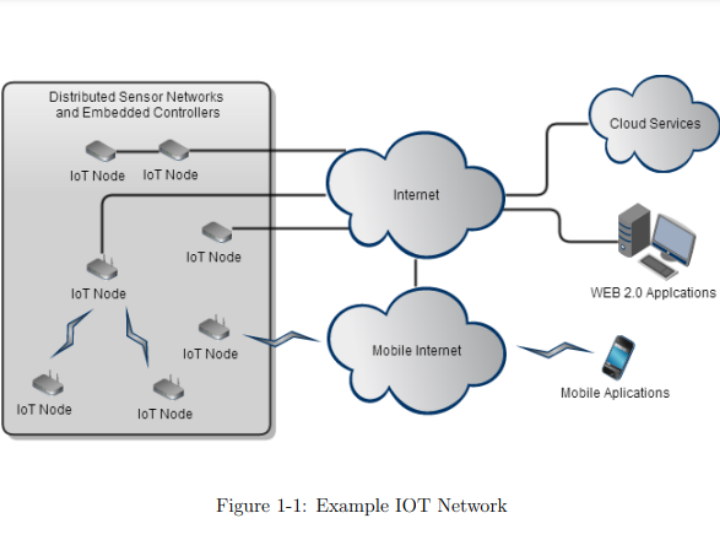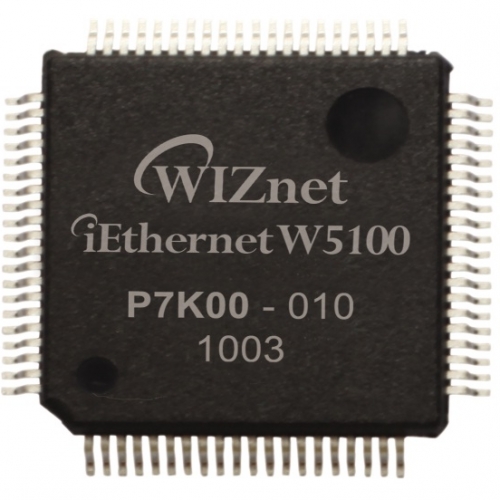An IoT Based Service System As A Research and Education Platform
The Internet of Things (IoT) is a rapidly expanding space for researchers, students, and professionals. Development of IoT applications.

Introduction Low power Internet enabled embedded systems used in sensor and/or control networks belong to the emerging Internet of Things (IoT) space. The physical IoT can be defined as a collection of objects connected to an Internet-like structure. IoT can also be considered any non-traditional computing device with a network connection. An Internet connected weather-monitoring station or an Internet enabled air conditioner are both examples of IoT devices. If an application has a network interface and connection to the physical world it belongs to the IoT space. In conjunction with the growth of Internet-enabled devices, the number of IoT applications is expanding rapidly.
Network Structure The physical layout of IoT systems is straightforward. There are a number of network nodes connected to the Internet. The connection from the node to the Internet can be wired or wireless. Also included in IoT networks are cloud services such as data servers, data routing devices, and web servers. The cloud services are responsible for processing and storing data. Lastly, there are user interfaces to the network such as a personal computer
When data is published to a server a message broker handles the forwarding of data to only those nodes that are subscribed to the topic the data was published under. To illustrate this concept, consider a network consisting of three nodes and a message broker. Node 1 publishes data under the topic “Node1/Sensor1” to the message broker. Only Node 3 is subscribed to the topic “Node1/Sensor1” therefore only Node 3 is sent the data by message broker.
Hardware For some embedded devices there is no onboard network connection available. In order to connect these devices to a network, additional hardware must be used. The hardware connection used is specific to the application. Connections exist in two categories: wired and wireless. Wired connections, usually Ethernet, are used for applications where access to existing wired network is available. Wired connections are usually more reliable and higher speed, and therefore preferred. In cases where a wired connection is not available, wireless can be used. Wireless connections can be WiFi, Cellular, ZigBee, or other. Wireless extends the range of existing networks or adds networking to new areas.
Ethernet Wired Ethernet is usually the first choice connection for IOT applications. Ethernet will generally be higher speed and more reliable than wireless alternatives. An external TCP/IP Ethernet controller is used to implement the TCP/IP protocols needed for Internet communication. The Ethernet controller facilitates Internet connectivity through TCP and UDP connections. The Ethernet controller selected for the design is the Wiznet W5100. The W5100 is a memory mapped device. To manipulate the device the microcontroller must modify memory values within the W5100. The commands to modify memory values are generated in driver software written for W5100. These commands are then sent over a 3.3 volt SPI interface. To send a packet, data is written to the W5100 from the microcontroller. The W5100 processes the command and sends the appropriate data to the transformers and RJ45 Ethernet port. To read a received data packet the microcontroller polls a status register on the W5100. If a data recieved flag is set the microcontroller reads the memory values from the W5100 containing the received packet. The data flow through the hardware is shown in Figure 3-2
Cloud Services In this chapter the cloud services associated with IoT networks will be discussed, specifically cloud based databases and webpages. Most IoT applications will require a database and/or a webpage. A database is needed for data storage on an IoT network. Data generated from the nodes is sent through the Internet to an MQTT broker and is inserted into the database. A cloud based database is capable of storing the large amount of data that can be generated from distributed IoT systems, and a webpage can be deployed for user interface with the network and database. A cloud hosted webpage allows for users to read collected data from the database as well as send commands across the network.
Conclusion and Future Work The IoT space is currently expanding rapidly. Many students and researchers are looking to build IoT applications. However, these students and researchers are facing challenges. The solution presented in this thesis represents a unique solution which covers the Internet of Things at both the large scale application layer as well as the small scale node layer. Most current solutions offer either a high level solution or a node level solution. For example the Cisco Internet of Everything covers the high level design including how IoT applications can help tackle grand challenges. However, Cisco’s solution does not include low level hardware solutions for node level devices. Another popular solution for IoT development is Arduino. In contrast to Cisco’s solution, Arduino provides a node level hardware solution but no high level system solution. Laying out the network structure, designing the network hardware, and writing the application code to handle network protocols are tasks that are faced every time an IoT application is developed. Having a full collection of reusable, open source, predefined structures will facilitate the development of future IoT applications. Lifting the burden of the hardware and networking side of IoT development will foster accelerated growth in the IoT space.

